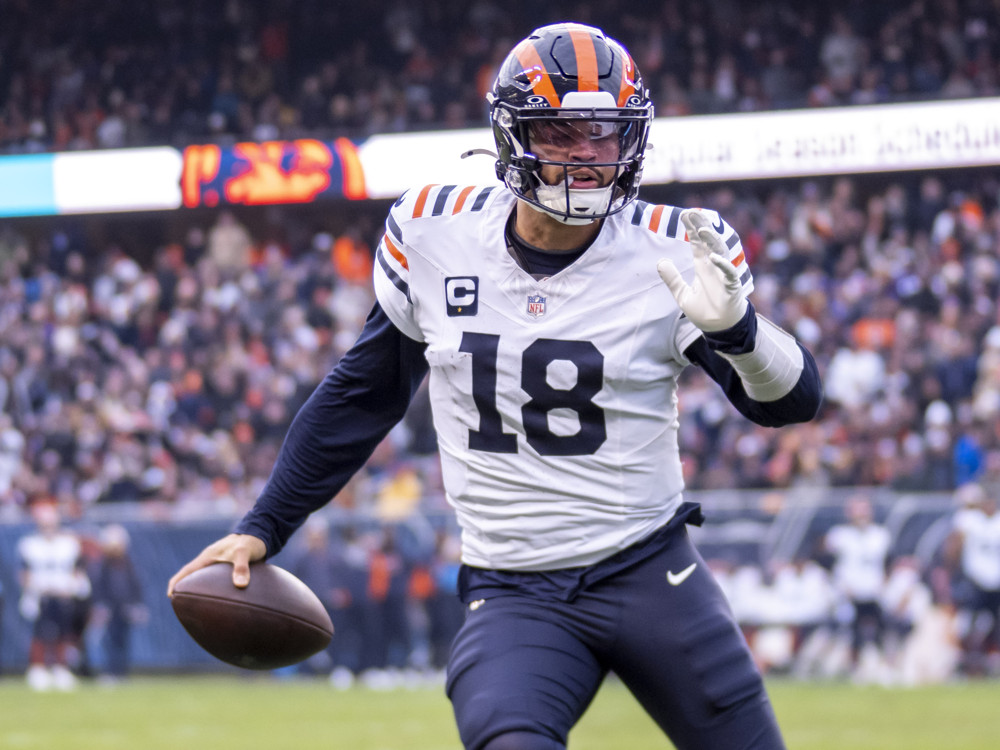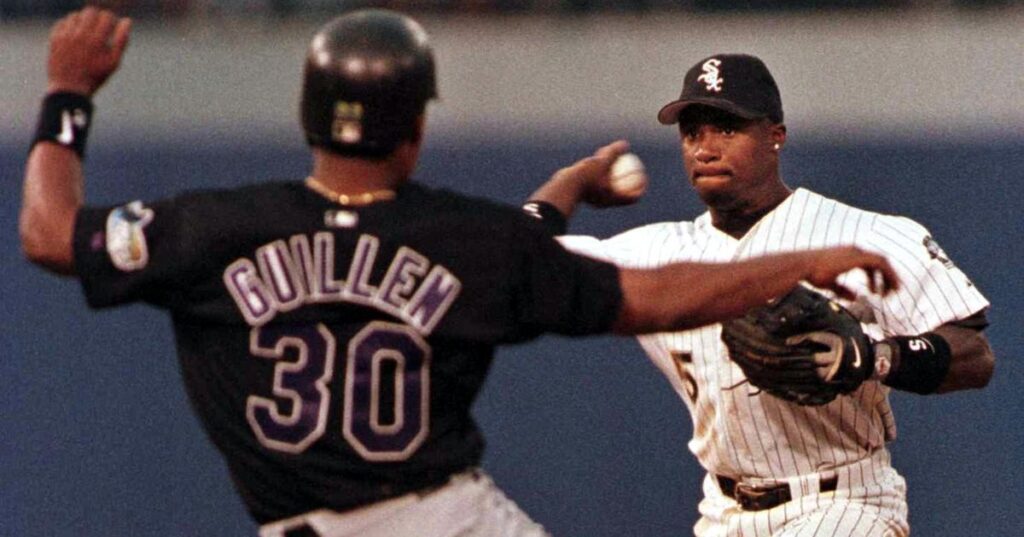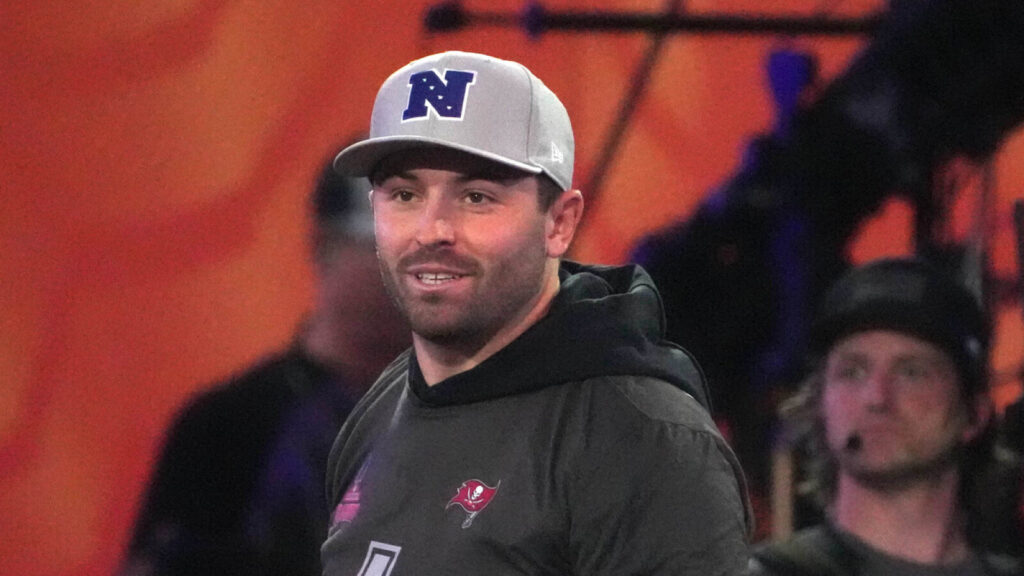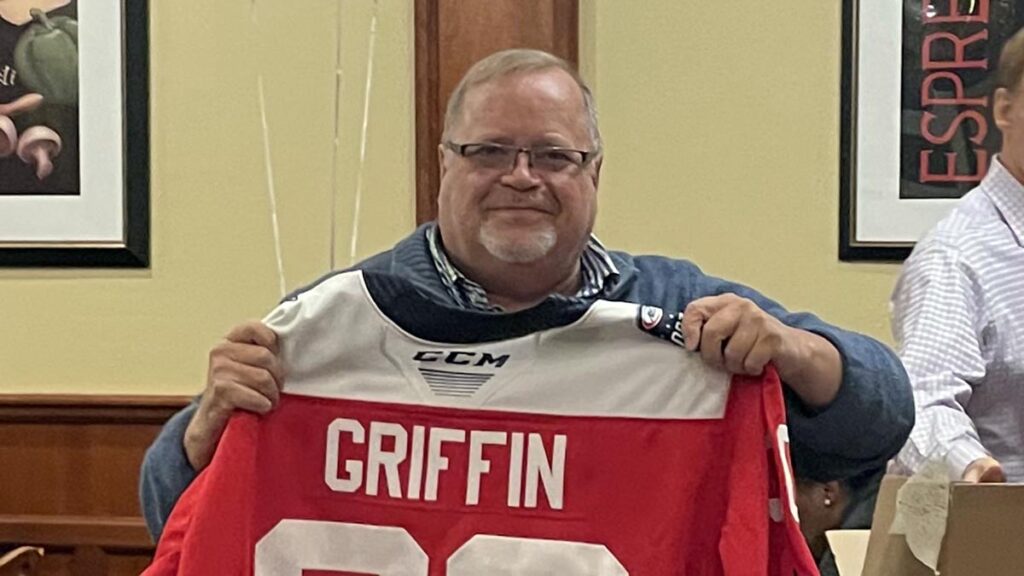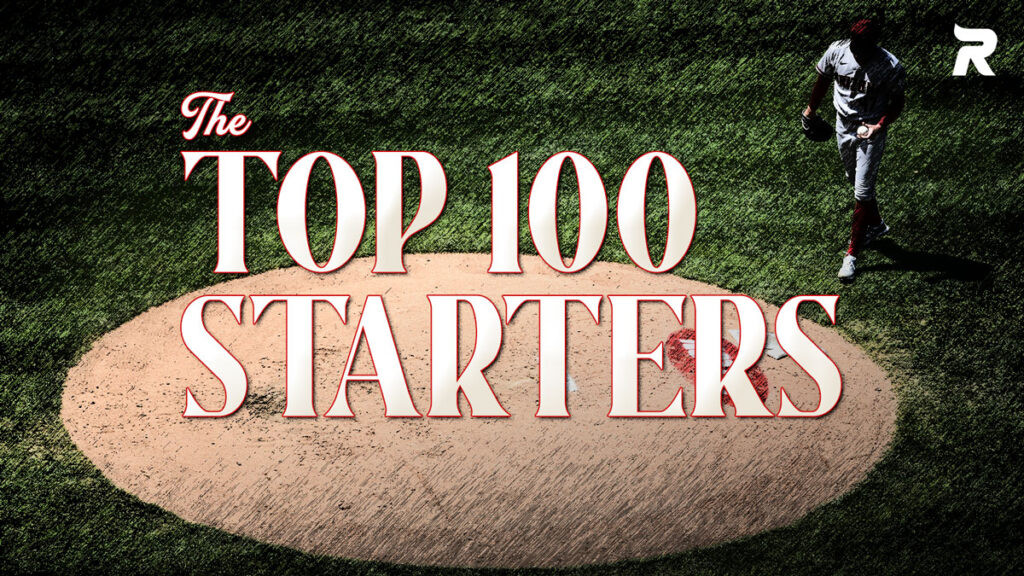We here at Dynasty Nerds are committed to giving you the best draft content in the industry. What better way to help our readers conduct their own drafts than for the Nerds to assemble for a Mock Draft? These will be a series of mocks that break down the various league types from our perspective. No matter what format you like to play, we aim to please. In this dynasty edition, we will give you a 12-Team Best Ball Startup Mock Draft:
- Each team will make 20 selections to build the core of their roster.
- Both starters and bench players will be covered.
- To make it a little spicier, we have assigned different build strategies to each manager.
- Discover how they crafted their teams to conform to strategies that range from win-now and productive struggle to specific division-heavy builds and everything in between.
Join “Doc” Matthew Mitchell, Mike Johrendt, Keith Ensminger, Peter Monahan, Steve Pintado, and John Hammersmith for this Best Ball Startup draft. Check it out and let us know how you think we did. Whose build did you like the best, whose did you hate the most? Please enjoy our most recent Startup Mock Draft.
Best Ball Startup Mock Draft
Scoring and Format Overview
The scoring and format for this SuperFlex, PPR, TE Premium Best Ball Startup Mock Draft are as follows:
- 12 Teams
- 9 Starters (QB, RB2, WR3, Flex2, SFlex)
- 6 points per passing touchdown (PPTD)
- 1 point per reception (PPR)
- .5 point per reception TE bonus (TE Premium)
1.01 | Year 1 Contender | @ReflipeWThenuz
Doc Mitchell: The Year 1 Contender build is literally the safest build you can make when doing a dynasty startup. I say that because how many times have you started a league and within the first couple of years, the league folds? For one reason or another, all that work you put into building a young, sustainable contender blows up in your face, and out go all of the league fees. With this build, the ultimate goal is to get your name on the trophy within the first couple of seasons so that no matter what, you are already ahead of the game come what may.
The 3rd round reversal can make this tough sometimes from the No. 1 pick slot, but I wanted to get a firm foundation for this squad and did that by locking in Josh Allen and Ladd McConkey in the first couple of picks. The win-now strategy came into effect over the next four rounds as I loaded up with Breece Hall, Christian McCaffrey, George Kittle, and Chuba Hubbard. From that point, I needed to focus on grabbing my remaining starting WR group and topped that off with Matthew Golden, Chris Godwin, and Calvin Ridley. Snagging Geno Smith in the 9th also gave me a potential high-scoring veteran QB2. In my estimation, this lineup will offer me some really high-end scoring potential with a bunch of high-volume players.
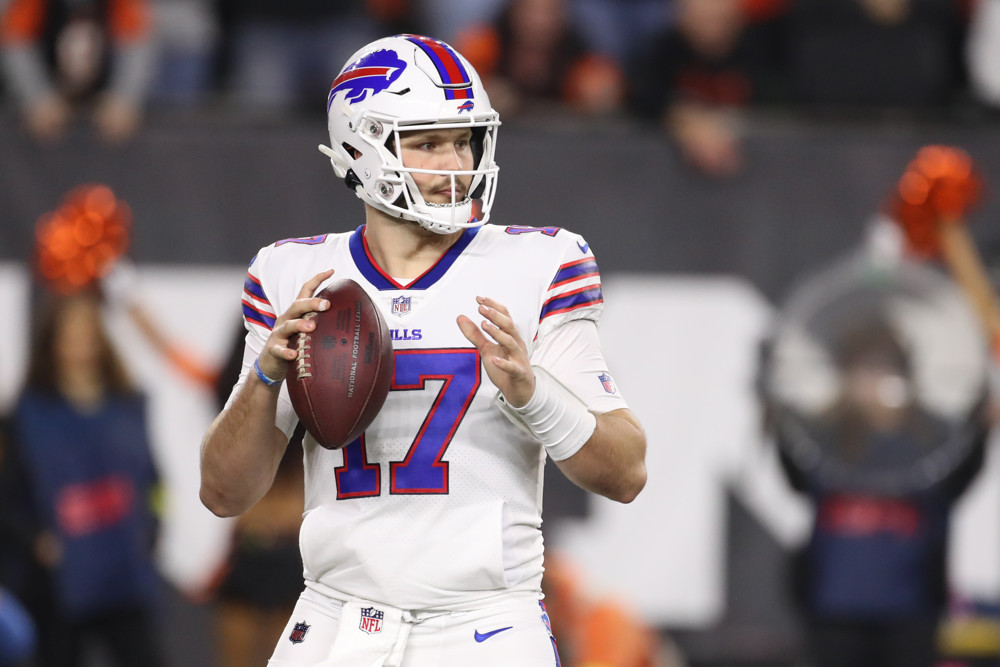
When it came to building the bench for this Year 1 Contender, I wanted to once again focus on immediate production as opposed to future potential. It is certainly tempting to grab as much youth as possible with an older starting lineup, but you also want to make sure that you have enough depth to plug and play when the inevitable injury bug hits. With that in mind, I managed to round out my position groups with Russell Wilson, Javonte Williams, Keaton Mitchell, Jacory Croskey-Merritt, Deebo Samuel, Cooper Kupp, Christian Kirk, Quinton Johnson, Ja’Tavion Sanders, and Chig Okonkwo. This is a bench loaded with tons of players who will be weekly safe plays. These are exactly the type of players you want in a Best Ball league because, on any given week, they could force their way into my starting lineup. My draft strategy going forward would all depend on how successful the Year 1 efforts go. No matter what that may be, I will be a contender right out of the gates with no glaring holes.
1.02 | AFC North Fanatic | @ReflipeWThenuz
Doc: This build strategy was a little bit different. It may not apply to everyone, but depending upon where you live, you may encounter many managers in your division using this approach. The concept revolves around constructing your team based largely around players in a certain division. In this case, I used the AFC North. I personally live in the greater Baltimore metro area. As a result, many of the managers I tend to play with will draft a ton of Ravens players. They also tend to grab players from Pittsburgh, Cleveland, and Cincinnati since those are the players they see the most outside of their hometown squad.
The first domino to fall in this build strategy was for me to take Lamar Jackson with the 1.02. Normally, I would suggest taking the younger Jayden Daniels if you wanted a QB, but we went with the MVP. My next two picks went outside of the build strategy since I didn’t want to take players that didn’t belong in that value range. So I added Drake London and Bucky Irving to my starting lineup. I rounded out my starting RB and WR group with Quinshon Judkins, Zay Flowers, and Jerry Jeudy. I managed to add Chase Brown and Jaylen Warren to my flex spots with Aaron Rodgers much later in my QB2 spot. As you can see, this lineup is chock full of AFC North talent. I will add one final note about my starting lineup. This draft was conducted prior to Quinshon Judkins’ legal issues. I still really like the player but would likely have let him slip a bit further had I know of the legal troubles.
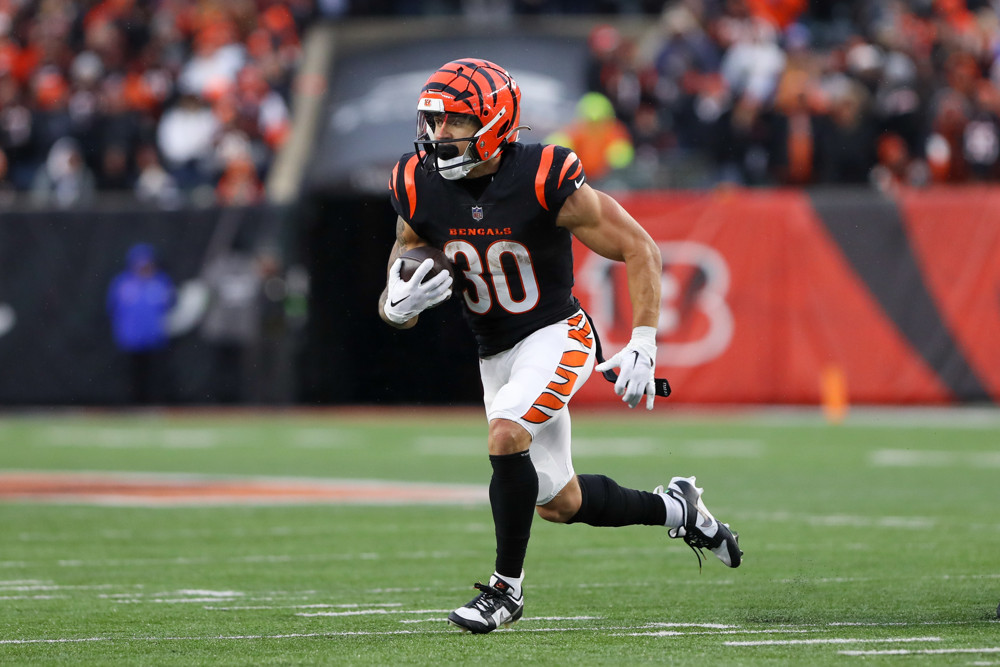
When looking at this bench, I wanted some youth and excitement to the squad while still attempting to drift around the AFC North. Despite drafting him before Aaron Rodgers, I would consider Bryce Young as a backup heading into the season. I thankfully protected myself in the Browns backfield by adding both Jerome Ford and Dylan Sampson to my bench. I also stashed Nick Chubb and Tahj Brooks At WR I took on Jack Bech and Xavier Legette. I took Mike Gesicki as my TE2 before finishing off the draft by taking Kenny Pickett on the chance that he wins the Browns starting QB job. Overall, I was really happy with the starting lineup of this team. I’m not as thrilled with my bench as I feel extremely thin at the WR spot. Thankfully, in Best Ball, I will let them decide who counts by their play on the field each and every week. Going forward I would suggest that this team hit the WR spot early and often in the rookie draft.
1.03 | Elite QB | @theSmingDynasty
Keith Ensminger: The Elite Quarterback Build is my favorite strategy to use when creating a Superflex roster. Having a solid foundation at quarterback simply makes your future rookie drafts that much more flexible. Rather than having to constantly hunt for another startable quarterback or put all of your eggs into the basket of an unproven rookie, you are free to focus on any of the other positions to build up your roster. In fact, the third pick in a dynasty startup draft this year is the best position from which to use the Elite Quarterback Build strategy. The third pick guarantees you one of either Josh Allen, Jayden Daniels, or Lamar Jackson, the elite of the elite. As fortune would have it, Jayden Daniels fell to me with the third pick, and my plan was off and running.
The next three rounds, however, were tougher decisions. LIke watching a game of chess unfold, every startup draft evolves in uncountably different ways, especially when it comes to how early and how often quarterbacks will be selected. To my surprise and delight, many fantastic quarterbacks started to fall later and later. With my second pick, I was torn between Justin Herbert and Bo Nix. I ultimately chose Herbert, as I felt like I have enough “boom” potential with Jayden Daniels that I could play it a bit safer with my second quarterback. Contrary to how this build often plays out, I did not take another quarterback in the third or fourth rounds, drafting Jaxon Smith-Njigba and TreVeyon Henderson instead. Truth be told, I was hoping for any one of Brock Purdy, Jared Goff, Trevor Lawrence, or J.J. McCarthy would fall to my next pick, but they were all taken in the fifth round. Instead, I drafted Cam Ward, who I believe is being criminally undervalued in startup drafts as the first overall pick in this year’s NFL Draft. To finalize my quarterback platoon, I selected Tua Tagovailoa, an outstanding choice in a best ball league, in the ninth round. At my other starting positions, I leaned into the best ball scoring by taking Xavier Worthy while also stacking Tyreek Hill with Tagovailoa. At tight end, I drafted David Njoku, another excellent best ball scorer, in the 8th round.
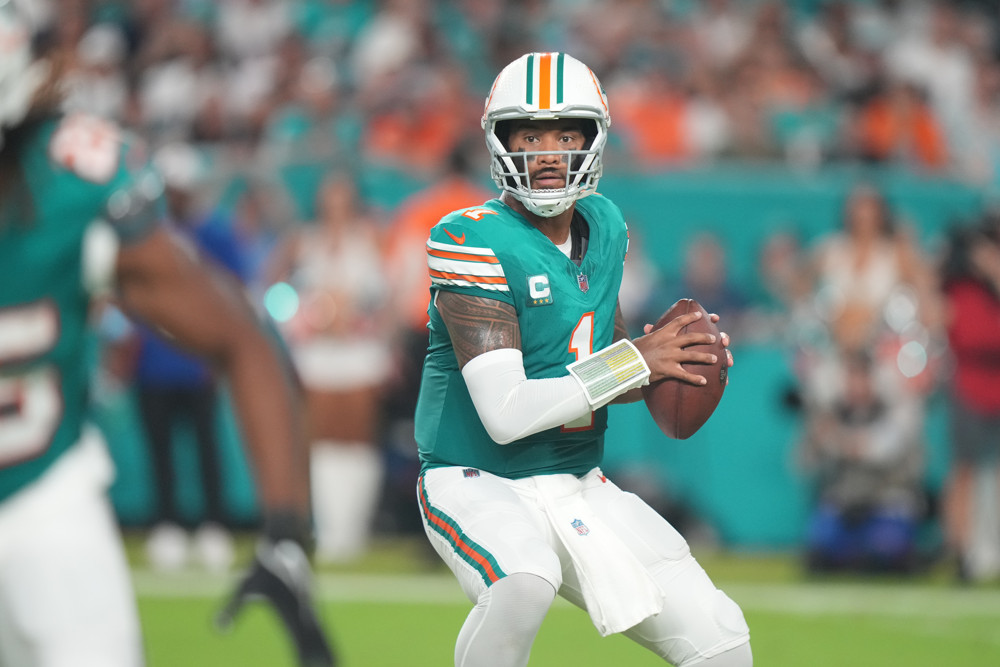
When leaning so hard into one position in a startup, it comes at the expense of others, and this roster is no different. The clear weakness of this team is at running back. While I hope that TreVeyon Henderson can be the rising tide that lifts all the other boats, in players like Tony Pollard, Najee Harris, and Austin Ekeler, I am hoping to squeeze a season or two of production. Remember the great thing about this build, though? I shouldn’t have to worry about drafting quarterbacks in future rookie drafts and instead focus on beefing up my other positions, most especially running back. At wide receiver, I again attempted to grab as many “boom or bust” wide receivers I could in players like Marvin Mims and Rashid Shaheed while also potentially getting a piece of the Chiefs’ passing attack in Jalen Royals. This build might not look as strong now as some others, but experience has taught me to hold judgment until we see what it looks like at this time next season.
1.04 | 3-Year Window | @theSmingDynasty
Keith: Jerry Glanville, former head coach of the Houston Oilers, once coined the now ubiquitous phrase that the NFL means “Not For Long.” Fittingly, a common piece of advice from dynasty fantasy football analysts is to think of your roster and plan your moves with no more than a “three year window” in mind. After all, what looks like a powerhouse dynasty roster in July may be in full rebuild mode by October. With that advice in mind, I aimed to draft this team with a core of players in their primes, waiting on quarterback while focusing on the other positions. In the end, I am very pleased with the results.
With my first two picks, I am not sure you could have a much better start to this build than cementing a foundation with Ja’Marr Chase and Saquon Barkley, the leading wide receiver and running back from last season. I wasn’t as enthused about getting A.J. Brown with my third pick, but I think that’s more symptomatic of who is generally available this year in that part of the draft. The players available from the third through fifth rounds feel like a mostly flat tier depending on the position you’re looking to get, but Brown will be a fine but unspectacular player as my WR2 behind Chase. Similarly, I was hoping Christian McCaffrey would fall to my fourth pick, but Kyren Williams will do fine as my RB2. Next, I was happy to get Trevor Lawrence as my starting quarterback, as he has tremendous upside which we’ve seen when he’s healthy. Unfortunately, my hopes to draft George Kittle with my next pick were dashed by Doc Mitchell on the turn, which became a common theme in thwarting my draft dreams. However, I couldn’t pass up getting Dak Prescott as my QB2, and I followed up by drafting the two stalwarts of any veteran build – Mike Evans and Alvin Kamara.
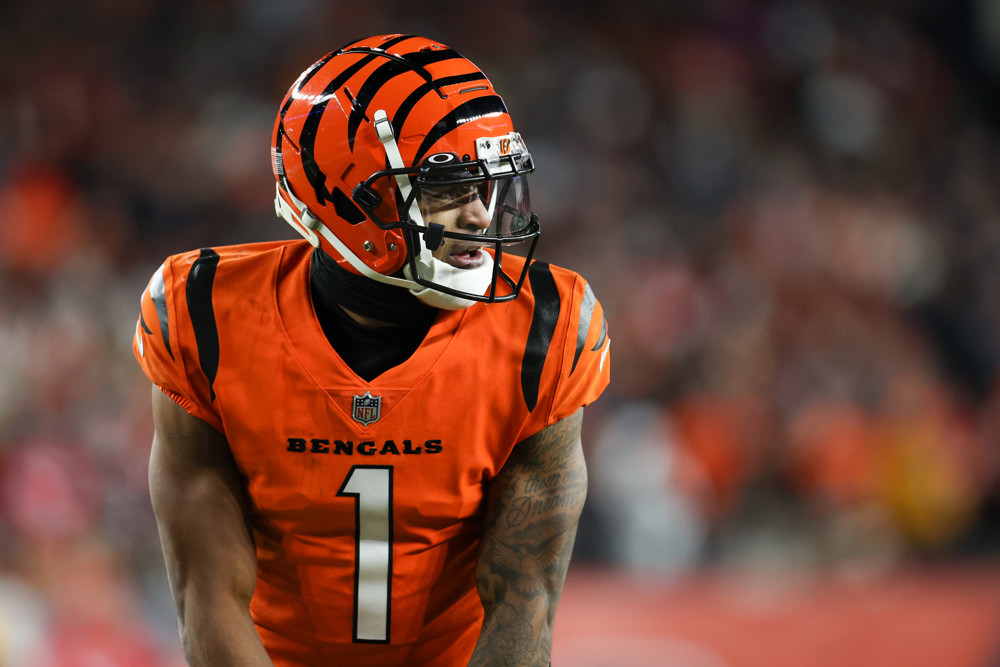
While I am happy with this veteran core, I started leaning a bit younger with many of my later selections. At tight end, as I missed out on Kittle, I went with the tremendous upside of Isaiah Likely but backed him up soon thereafter with the fantasy football milquetoast of Pat Freiermuth. My other concern is with my QB3 of Anthony Richardson. He is not only an injury risk, but he is in risk of being benched. That said, no other quarterback left on the board had the obvious potential to have a “boom week” and get into my lineup with our league’s best ball settings. Finally, in taking players such as J.K. Dobbins, Cedric Tillman, and Woody Marks, I am hoping I can get a few weeks of scoring out of them if things break my way. This build is fragile and a few injuries away from a complete rebuild, but that’s the risk we take when we play this game we all love.
1.05 | Balanced | @Pistol_Pete026
Peter Monahan: Dynasty best ball leagues have become my new favorite format, and the only format I’ll join for new league startups going forward. I’m just in too many lineup leagues, where scrambling to check for last-minute injuries and setting my lineup on Sunday mornings has become too much work. With that said, when I saw we were doing this best ball mock, I had to jump in! My team, picking out of the 5 spot, was assigned a balanced build, and I feel like I did just that. My first four picks were one of each position in quarterback, wide receiver, running back, and tight end (in that order), which I feel like set up a solid base for my team and allowed me to take the best value player (while staying balanced) at each selection throughout the remainder of the draft. Through this 20-round mock draft, my team consisted of 3 QBs, 5 RBs, 8 WRs, and 4 TEs.
I know by default everyone always likes their own team immediately following a draft, but I really felt good with the structure of this team as I was able to fill out my entire starting lineup through the first 10 picks (halfway point) of this draft. Keeping with that balanced theme, after my first 10 picks, I had either 2 or 3 of each position group. Six out of my first 8 picks finished top 12 at their positions last season, and one of the two who didn’t (my second-round pick, Nico Collins) was due to injury. Collins played in only 12 games last season, but he still managed to finish in the top 12 in points per game at wide receiver. In best ball, I don’t go out of my way to force stacks, but if the opportunity presents itself, I could use that as a tiebreaker. My 5th round selection of Jared Goff to go with my prior pick of Sam LaPorta was a nice pairing (I later added Isaac TeSlaa with my final pick as well). Another unintended happening that I noticed starting to form was also the opportunity to add correlation within a division. I already had Goff and LaPorta when my 7th-round selection presented the opportunity to take D.J. Moore. Then, after that, 2 and 3 rounds later respectively, I also added a player from the two other NFC North division teams, adding Tucker Kraft and Aaron Jones to my roster.
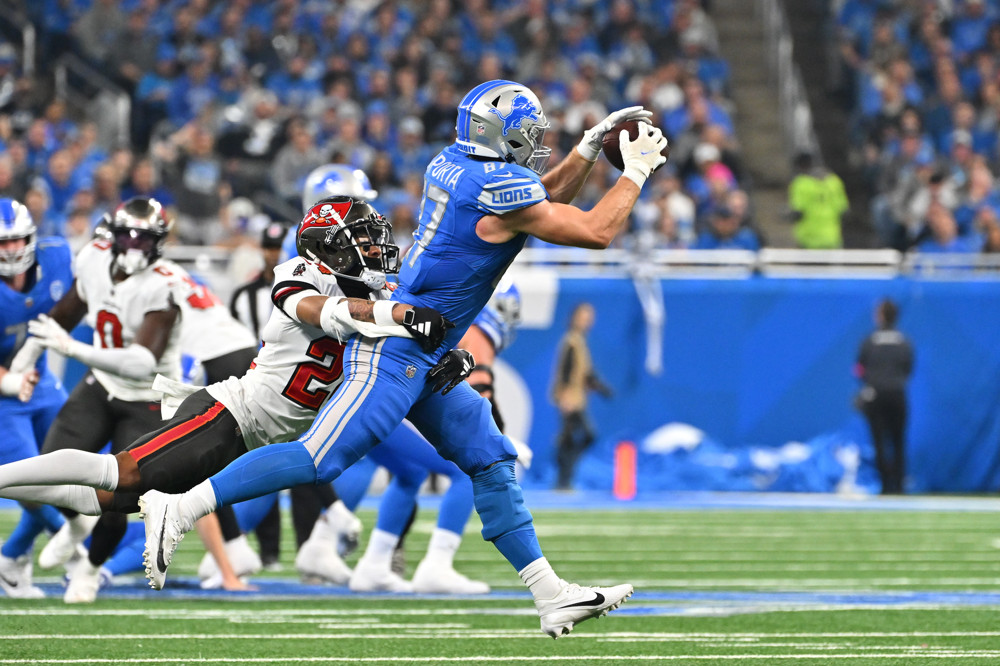
Building out your bench in a best ball league is far more important than in a traditional lineup league. Your “bench” in best ball is critical to having a successful team, as you want as many players as possible who can score points in any given week. For this reason, I typically try to avoid carrying any or very few players who will score zero points that week. That’s why I don’t usually roster backup quarterbacks or 3rd string running backs like I typically would in a lineup league. I also like to roster at least 3, if not 4, being the preferred number of starting quarterbacks, regardless of the quality of that quarterback. If they are starting that week and there is a chance to enter my starting lineup, I want them on my team. With this team in particular, 4 of my final 5 picks were wide receivers. Wide receiver number 3 or 4 options on their NFL team usually have the best chance to boom in any given week, and enter into your starting lineup, so WR is usually my most rostered position in best ball leagues.
1.06 | Hero RB | @Pistol_Pete026
Peter: Now comes my team build from the six spot, where I was tasked with a hero running back build. I realized in about the 8th round of this draft that the label ‘hero RB’ could mean one of two things. The more common meaning is selecting one top anchor running back that you expect will be a top option for that season. This was my approach, and my choice at 1.06 was Bijan Robinson. Another way to think of hero RB could mean drafting 3 or more running backs in the first few rounds, which would make running back your strongest position. After selecting Bijan in the first round, I did not choose another running back until my choice of Joe Mixon in the 8th round. Mixon was RB23 off the board, and I felt he was a great RB2 for this hero RB build. My roster through this 20-round mock consisted of 4 QBs, 5 RBs, 6 WRs, and 5 TEs.
Unlike my balanced team picking from the 5 position, I did not really like the way this team turned out. Knowing that I did not need to focus on drafting running back for some time after my first-round pick should have allowed me to lock down and be strong with at least one of the other positions. I took Trey McBride to lock down an elite tight end, although that is a little bit less necessary in a best ball format, given the week-to-week volatility at the position. After back-to-back quarterback selections in rounds 3 and 4, I did not select my first wide receiver until round 5 with DeVonta Smith. Smith was the first of 3-straight WR picks, followed thereafter by 3-straight RB picks. I think my two favorite picks for this team were both at quarterback, with my selections of Matthew Stafford in round 11 and Daniel Jones in the 14th round. The more reports that come out of Indianapolis, the more it seems there’s a real chance Jones could win the job to start the season. Adding a potential starting QB in the 14th round, especially one with the rushing upside that Jones has, could be a great pick looking back in a few months.
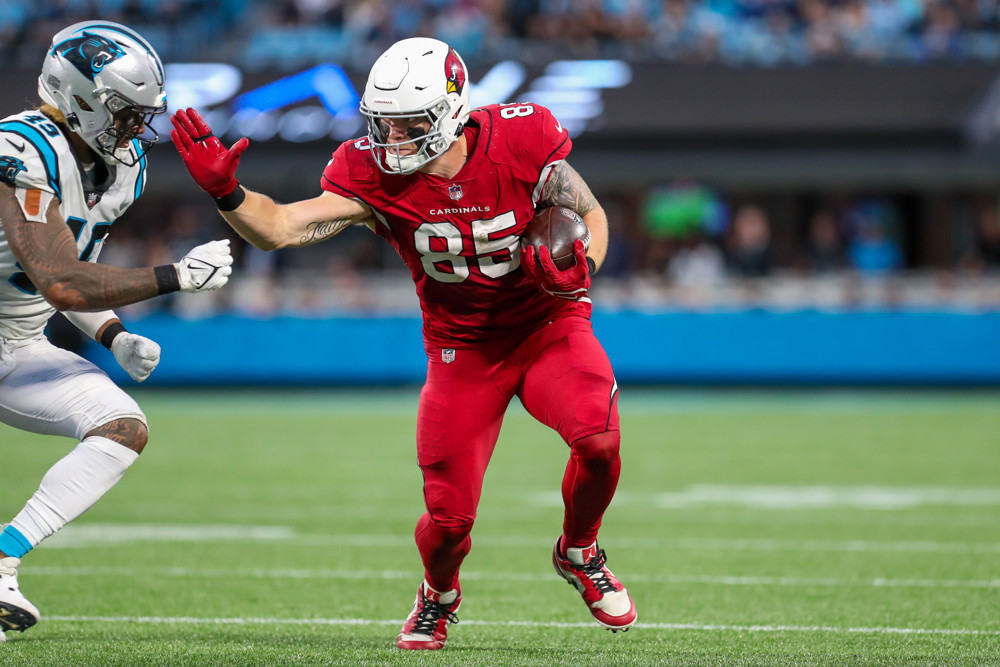
My bench took shape where I think my two best positions are at quarterback and tight end. At quarterback, having 3 locked-in starters and a possible 4th in Jones makes me feel good about this position following the draft. Then, at tight end after my 2nd-round selection of Trey McBride, I was able to add several older veteran options with guys like Jake Ferguson, Jonnu Smith (if you think he jumps over Pat Freiermuth), Dalton Schultz, and Tyler Conklin. My bench wide receiver options are by far my least favorite aspect of this team overall. I was sniped twice (by myself, the pick before haha) in both the 16th and 18th rounds, where Rashod Bateman and Troy Franklin were the selections before this team’s Pat Bryant and Tyler Conklin choices. I know we can’t truly compare since these are all individual teams, but out of my two teams, I preferred the balanced team build versus this hero running back team.

1.07 | Zero RB | @MJohrendt
Mike Johrendt: My first roster was designated as a Zero RB build, a common roster build type for rosters in best ball formats. Joe Burrow thankfully fell into my lap at pick 1.07, as he was the final tier one quarterback left on the board. Building my roster around one of the more passing-heavy offenses is an easy way to capitalize on boom weeks. The run on receivers started next, as the trio of Brian Thomas Jr. (2.06), Garrett Wilson (3.06), and Burrow’s teammate Tee Higgins (4.07) helped round out a strong WR room. I circled back to QB in round five, adding Brock Purdy to round out my QB room. Colston Loveland was the sixth tight end off the board, a value that was tough to pass up in round six. Kenneth Walker III was the first addition to my running back room at 7.06, before another trio of WRs (Jayden Higgins, Cortland Sutton, and Josh Downs) were drafted to wrap up my first 10 rounds. My final roster ended up with 3 QBs, 7 RBs, 8 WRs, and 2 TEs.
Stacking Higgins with Burrow is one of my favorite parts of my roster construction, as getting a second piece to capitalize on heavy passing weeks gives this roster a high ceiling. I probably waited one round too long to add my first running back, but having Walker there in the seventh round is solid value. Alvin Kamara was in heavy consideration here as well, but Walker’s age and (hopeful) uptick in role in Seattle made it hard to pass up. The three consecutive receivers in rounds eight through ten could have gone a little differently, as I was targeting Tony Pollard and James Conner. With both backs being taken a few spots before my ninth and tenth round picks, respectively, I decided pivoting back to WR made sense.
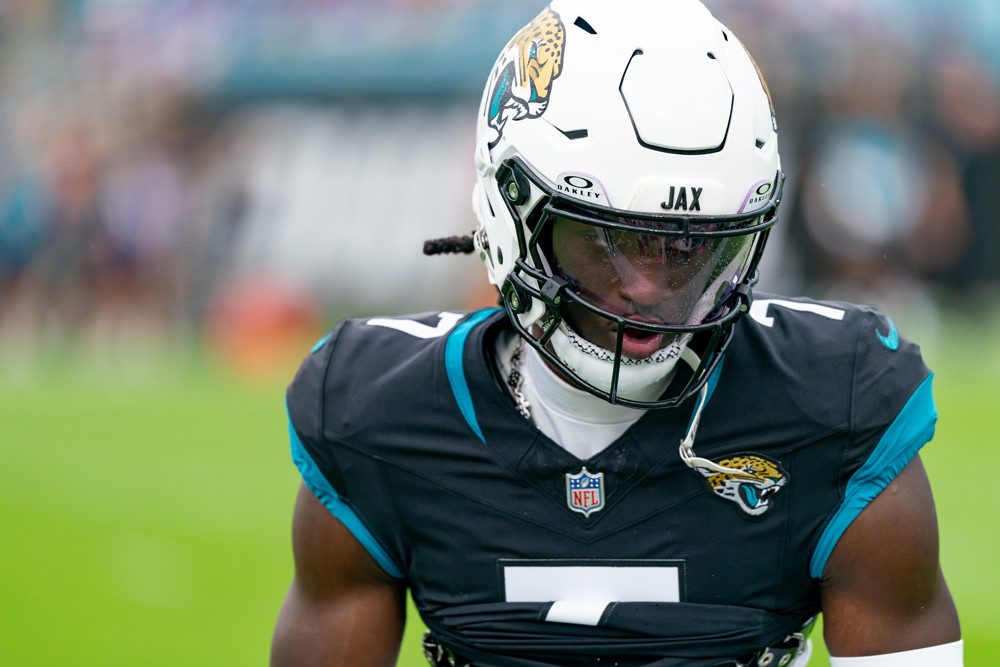
For the back-half of our best ball mock draft, I took a heavy dosage of running backs – six to be exact. Tyrone Tracy, Trey Benson, Rachaad White, and Ray Davis were my first four picks of the second half, and all four options hold weekly RB2/3 value, meaning they can easily have spike weeks. Harold Fannin rounded out my TE room in round 15, as he started a run of five of my final six picks being rookies. Fannin, Elic Ayomanor, Will Howard, Ollie Gordon, and Jordan James all have the potential to grow into bigger roles as the season goes on, giving them all a chance to have spike weeks that can factor into a starting lineup at any point. All in all, my roster construction feels solid, as it followed the Zero RB prompt well. Going high upside with my first three WRs gives this roster a chance to really have some high-scoring weeks, but there is enough depth to weather some injuries or down weeks.
1.08 | Hero TE | @MJohrendt
Mike: My second roster build followed a Hero TE blueprint, something that is becoming more common with the plethora of top TEs in the NFL. I helped kick off the tight end group by drafting Brock Bowers at pick 1.08. I followed up Bowers with Puka Nacua at pick 2.05, giving me a cornerstone at two key positions. Bo Nix and Travis Hunter were next up, as two high-upside picks that should have safe floors as well. Round five was when I took my first RB, as Derrick Henry was a screaming value midway through this round. Pairing Henry with rookie Kaleb Johnson might be my favorite part of this build, as both of these backs could very well be high-TD options this year. Chris Olave’s profile is risky, but a 25-year-old WR1 on a team that will need to pass a ton is a screaming value. Justin Fields, Brandon Aiyuk, and Isiah Pacheco rounded out the last three picks of the first half of my draft. My final roster ended up with 3 QBs, 7 RBs, 7 WRs, and 3 TEs.
The headlines for this build are situated around the first two rounds, but you should draw your eyes to rounds six and later here. Johnson enters training camp as second fiddle behind Jaylen Warren, but these two backs are more likely 1A and 1B than 1 and 2. Johnson’s physicality and ability to add juice in between the tackles makes it likely that he will become the RB1 by the end of the season. Adding Nacua and Hunter at WR means that taking a bit of a leap on Olave is an insulated risk and one that has a high potential ceiling. Fields’ rushing value alone will give him spike weeks, once Aiyuk returns after his injury recovery he should find himself as the WR1 in San Francisco again, and Pacheco’s competition is Kareem Hunt, Brashard Smith, and Elijah Mitchell, three options that don’t really threaten Pacheco’s starting role.
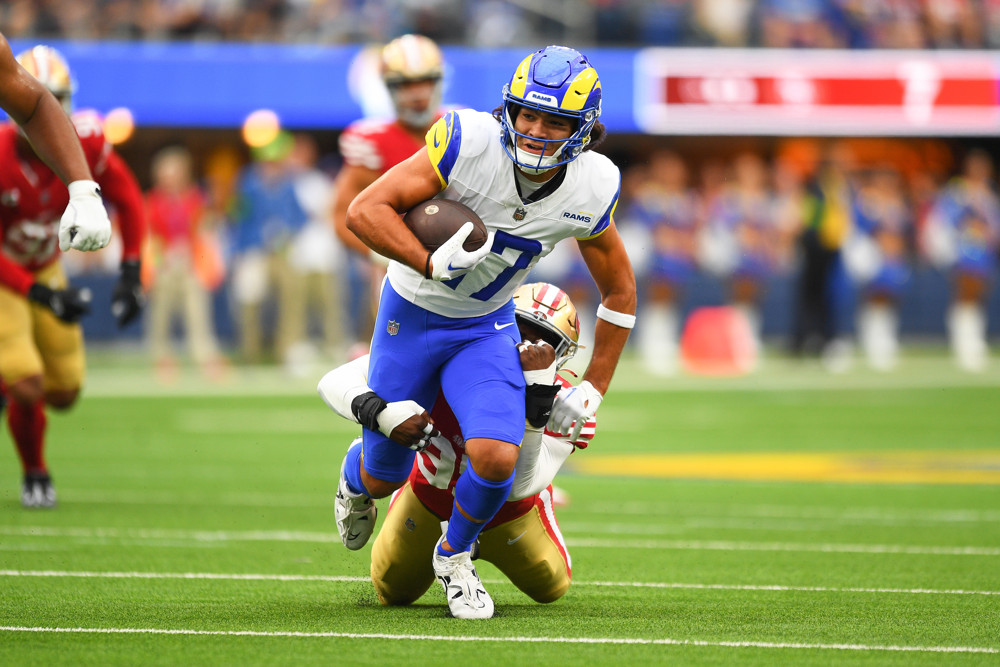
After adding my second Las Vegas Raider (Jakobi Meyers) in round 11, rookie Jalen Milroe was drafted 12.8 to give me my third QB. Tank Bigsby and Braelon Allen are both upside plays that are solid additions to the bench behind Henry and Johnson to help round out the RB rotation. Stefon Diggs (14.08) and rookie Tory Horton (18.08) were the final WRs taken, and even getting one more top-20 season out of Diggs would make his 14th-round selection worthwhile. My team was rounded out by a veteran TE (Cade Otton) and three rookies, as DJ Giddens (17.05), Trevor Etienne (19.05), and Oronde Gadsden (20.8) were added for depth. Admittedly, this roster is a bit thin at QB. The Nix/Fields/Milroe stack is lacking a bit, even with Nix’s safer floor, as Fields can be an inconsistent wild card and Milroe is a backup. Adding both Meyers and Diggs as depth WRs gives this team a real strong WR room, and the early start with Bowers allowed me to focus on other positions and not revisit until late. Bigsby could very well be the starter in Jacksonville, and even if he is the RB2 there, going off the board in the 13th round is a steal. Both my RB and WR rooms are strong because of depth and have their respective headliners, while Bowers is in the upper echelon at this ‘onesie’ position.
1.09 | Zero TE | @coachstevenp
Steven Pintado: I drafted from the 1.09 spot in this Dynasty Best Ball league and employed a zero-tight end strategy. This meant I focused heavily on securing strong options at other positions while intentionally waiting to address the tight end position until much later in the draft. Despite fading the position early, I was thrilled to land Travis Kelce in the 10th round. While Kelce is no longer in his prime and will turn 36 during the 2025 season, he remains valuable in the best-ball format, especially given the inconsistency of the tight end landscape. To counter against Kelce’s age and potential decline, I also drafted Ben Sinnott, a young player on an improving Commanders offense. Sinnott offers long-term upside and could eventually be star in Washington. I added veterans Hunter Henry and Tyler Higbee for added depth and stability through the 2025 season.
At 1.09, I was ecstatic to land Justin Jefferson, who gives me elite WR1 production with league-winning upside. My quarterback room includes Patrick Mahomes and Baker Mayfield. Both provide an elite weekly ceiling and sneak into top-5 in production. My running back group is built around three strong producers, who collectively posted 18 games of 20+ fantasy points last season. This consistency provides a strong weekly foundation and big-play potential in any given matchup. Wide receivers behind Jefferson include Terry McLaurin, part of an ascending Commanders offense. Jaylen Waddle and Khalil Shakir are sneaky best ball assets who could erupt in any week.
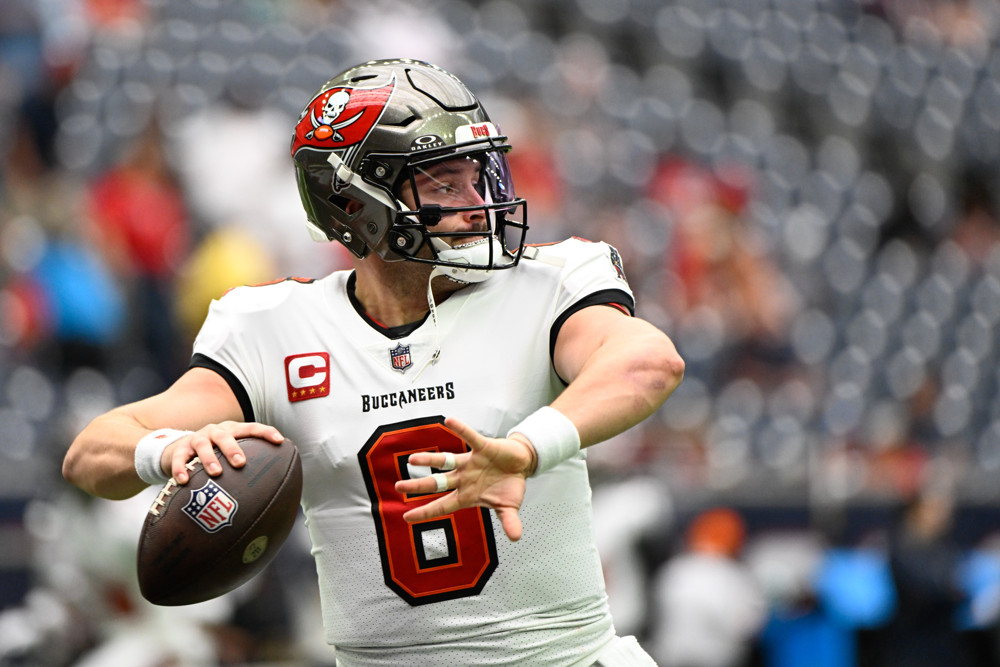
A solid best ball bench is critical for thriving in-season. I believe I’ve secured several high-upside contributors who could outperform their ADP. Bhayshul Tuten is an explosive athlete in Jacksonville with a real shot to emerge as the lead back due to his elite speed and versatility. Jauan Jennings, We’ve seen his multi-touchdown upside before, and he continues to earn targets and trust in the offense. Alec Pierce is coming off a strong season; he has the deep-threat ability to go over 100 yards and score on just a few touches. This team is built to compete immediately while maintaining upside and flexibility for the 2025 season and beyond. Of consistent weekly contributors and explosive depth, I feel confident this roster can make a serious run in any best-ball league.
1.10 | Zero QB | @coachstevenp
Steven: For this team, I drafted from the 1.10 spot and followed a zero QB strategy, meaning I intentionally passed on quarterbacks early and waited until the middle rounds to address the position. The idea was to load up on elite skill players while taking calculated shots at QB value later. I didn’t take a quarterback until pick 7.03, where I selected Michael Penix Jr.. Entering his first full season as an NFL starter, Penix has strong arm talent and showcased his upside with a 300-yard, 2-touchdown game in Week 18 last season. While unproven, his potential to develop into a QB1 in best ball is real. As the QB pool thinned out around Round 10, I grabbed Jaxson Dart, hoping he earns and holds the starting job in New York. While he’s a long shot, the upside is worth the stash in this format. To provide some immediate depth, I also selected Sam Darnold in the 11th round. He may not be a long-term piece, but he could serve as a temporary QB2 or trade chip if he does well again in 2025.
I noticed early on that i was building my draft for a long-term dynasty build with some upside to surprise in 2025. My first two picks were Jahmyr Gibbs and CeeDee Lamb, two young studs with elite talent and top-5 positional ceilings. I continued surrounding them with rising talent, creating a youthful foundation with 9 of my 10 starters being 25 years old or younger. To pari with Gibbs, I drafted Omarion Hampton who should be a future bell-cow who should lead the Chargers backfield for years to come. Rashee Rice, Emeka Egbuka, Ricky Pearsall, and Tre Harris are a deep group of young WRs who all carry WR1 potential on their respective teams as they develop. Rice is basically already there and was a target machine until he went down last year. Rookie tight end Tyler Warren has the athleticism and opportunity to become a top-3 fantasy TE in the next few years.
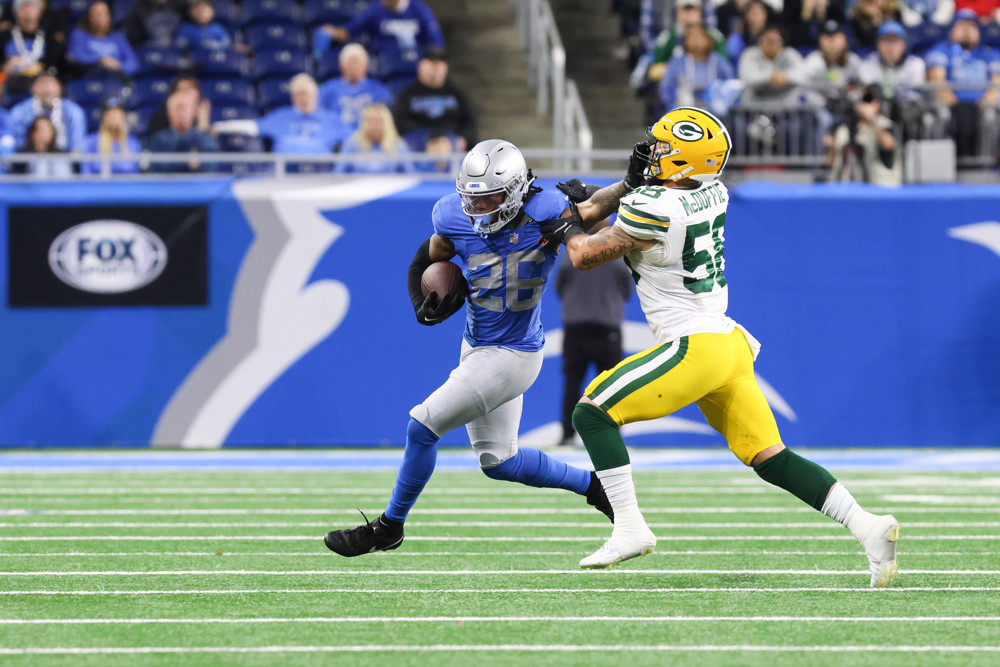
For my bench, I focused on high-upside stashes that could explode in 2025 or beyond for long-term success. Kendre Miller could still have a shot if the Saints give him a real opportunity; he has the tools to shine. Receivers Jalen Coker & Xavier Restrepo both could benefit from uncertain WR depth charts and may produce sooner than expected. Michael Mayer was a steal in Round 16. He has long-term TE1 potential and will eventually carve out a starting role for some NFL team. Jonathan Brooks, I took a late shot on him in hopes he recovers and revives his career. While this may not be a championship roster in 2025, this team is built with a clear identity youth, upside, and future firepower.
1.11 | Productive Struggle | @luxembourgh
John Hammersmith: For this mock, I was assigned a Productive Struggle build, starting from the 11th position. This strategy felt like home; it’s how I approach most startups already. The biggest difference between Best Ball and Lineup formats for me is in the build philosophy. In Best Ball, I chase spike weeks, targeting ceiling players at every position over a safe floor. So, what’s the goal of a Productive Struggle? Stack as many high-upside, sub-25-year-old players as possible. I want to attempt to be competitive, but I’m building with the expectation that this core leaps forward next season. That mindset lets me stay aggressive in the draft while remaining patient during the season. Growth this year. Noise in Year 2.
I’m pretty smitten with how this team turned out. Every player on the roster is 25 years old or under and packed with talent. Starting with Malik Nabers and Ashton Jeanty’s secure value felt like a dream scenario for a Productive Struggle build. Landing Drake Maye and J.J. McCarthy gave me two young quarterbacks likely to appreciate as they settle into their NFL careers. I followed that up with Tetairoa McMillan and rookie RB RJ Harvey, both of whom should command significant volume right out of the gate. Jameson Williams fits perfectly as a boom-or-bust WR3 in Best Ball formats. From there, I leaned hard into rookies: Cam Skattebo, Kyle Williams, Terrance Ferguson, and the ever-polarizing veteran Kyle Pitts, who, despite all the missed expectations, is still just 24 years old. This build checks every box for a true Year 2 breakout roster: youth, promise, and the kind of excitement I’m happy to root for every Sunday.
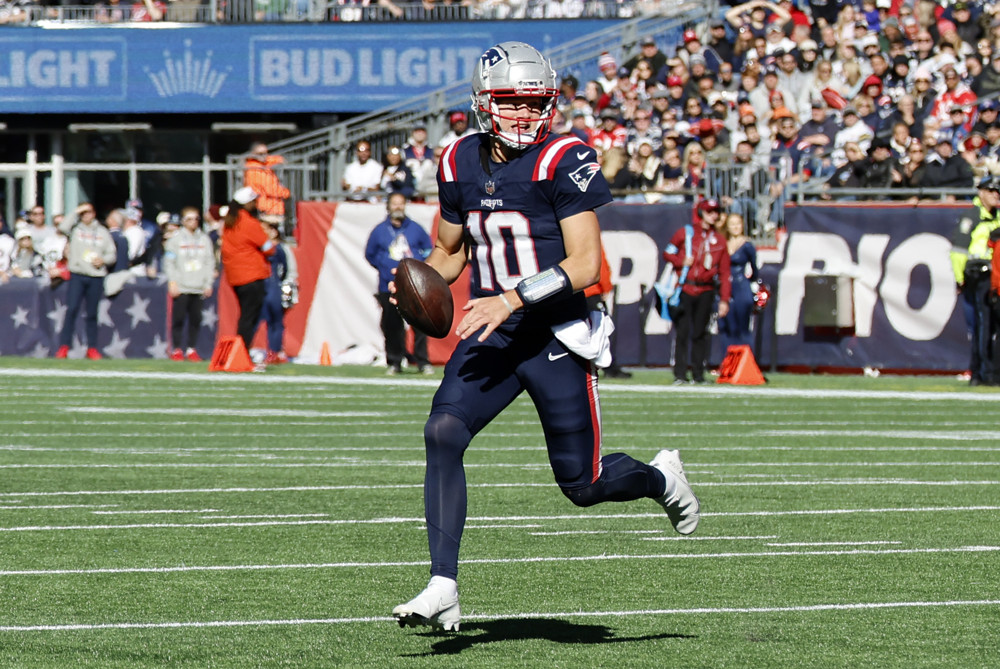
To close out the roster, I locked in the Cleveland rookie QB duo, Shedeur Sanders and Dillon Gabriel, and added dual-threat hype machine Joe Milton. While Drake Maye and J.J. McCarthy give me real hope for the future, I’ll admit, QB depth is thin. But that’s part of the Productive Struggle blueprint. My RB room is made up entirely of rookies, led by Ashton Jeanty, with Devin Neal and Jarquez Hunter rounding it out. Both Neal and Hunter could walk into starting roles by 2025. At receiver, DeMario Douglas makes for a fun stack with Maye in a wide-open New England depth chart, and Adonai Mitchell adds another big-play threat who fits nicely in a Best Ball format. This is a roster built for potential. I’m not expecting to contend in Year 1, but by this time next season, I will be holding one of the most valuable young cores in the league.
1.12 | NFC North Fanatic | @luxembourgh
John: Drafting from the 12th spot, I was given a fun twist: build a team with an NFC North focus. As a lifelong Bears fan and follower of the Black and Blue division, this was a blast. It reminded me that dynasty fantasy football, while filled with spreadsheets and heart-wrenching decisions, is still supposed to be fun. My core philosophy didn’t change in this exercise: I leaned into a Productive Struggle and chased value where it made sense. I let the NFC North bias tip the scale when players were close in my rankings. I was genuinely surprised by how well the build came together, because I know some of these picks would’ve gone differently without the division-focused lens.
I kicked things off with Amon-Ra St. Brown, a foundational WR locked into long-term value, and paired him with Bears QB Caleb Williams, who brings massive upside even if his fantasy floor is still TBD. With Jahmyr Gibbs and Justin Jefferson already off the board, these were the only NFC North players worthy of consideration at the 1/2 turn. The third-round reversal brought a gift: Marvin Harrison Jr. No NFC North player was worth reaching for at that point, so I gladly scooped him up and got back on track with some NFC North flavor at the 4/5 turn: Jordan Love and Rome Odunze. At this point, I had two young, high-upside QBs and three WRs who are either dynasty WR1s or drafted to become them. It’s hard to script a better start for a build with both fan flair and real value. Rounds 6 and 7 brought a Nordic breeze of value in T.J. Hockenson, who filled a massive hole at TE, and his teammate Jordan Addison. With RB looking thin, I was happy to plug in DeAndre Swift and David Montgomery, two veterans with clear roles and short-term production appeal. I allowed myself to deviate from the division, landing Evan Engram and Zach Charbonnet in the double-digit rounds.
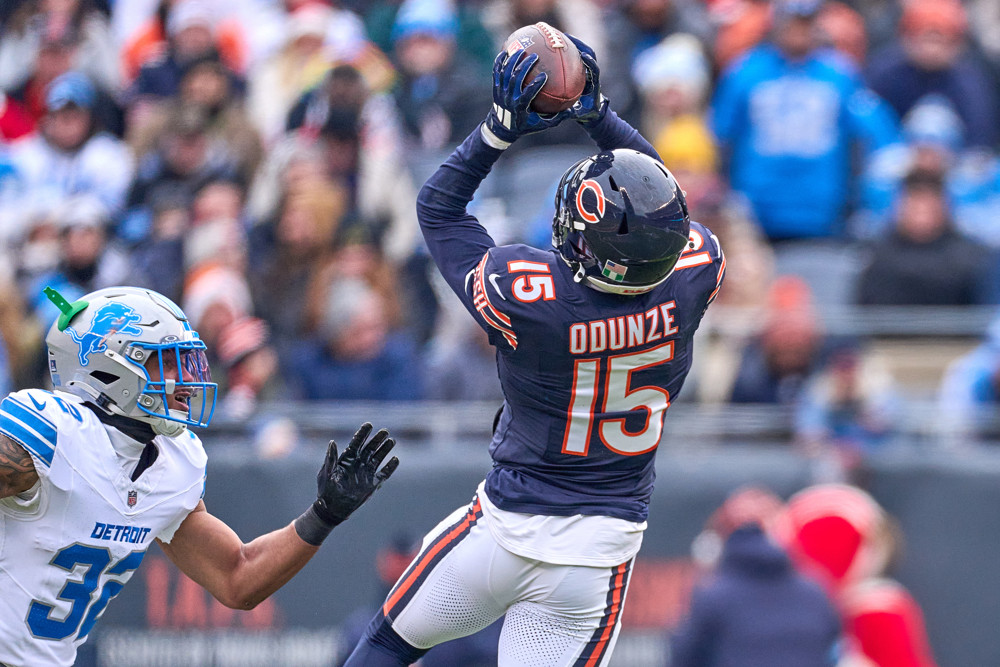
Into the deeper rounds, my focus shifted more toward players with opportunity paths or spike-week potential. Jordan Mason and Tyjae Spears gave my thin RB room a shot of upside, and suddenly, despite not drafting a back until Round 8, the position felt solid. Kyle Monangai and Marshawn Lloyd, young backs with paths to relevance, rounded out the group and gave me a running back from each NFC North team. At WR, I grabbed Romeo Doubs in the 15th, a high-snap player who gives you 2 big games a year. I leaned into the NFC theme without sacrificing value. A familiar trend popped up again, a shallow QB room. Joe Flacco was the only other QB I added, meaning there’s a very real chance I have no backups. This is a situation I’ll need to address with both teams eventually. Elijah Arroyo, and two more NFC North tight ends rounded out the TE position group. In the end, this build stuck to the theme, stayed flexible, and came out with a surprising amount of balance and upside, all while immensely fun to strategize around.
Make Requests! | Best Ball Startup Mock
There you have it. This is our take on a 12-Team Best Ball Startup Mock. Tell us how we did. Did you like the various build strategies? Did you like the picks that our Nerds made? We are striving to give you the very best content in the industry.
Your feedback is greatly appreciated. Reach out to us and tell us what you think.
- Where can we improve, and more importantly, what is it that you are looking for in our Monday Mocks with Doc?
- What type of leagues do you play in, and what type of builds would you like us to explore?
- Best Ball?
- Auctions?
- 16-Team Double Player copies?
Let us know what you are looking for, and we will assemble the Nerds! Thank you so very much again for reading this article, and good luck this coming season in your dynasty leagues. You can find us on Twitter, Tik Tok, YouTube, Reddit, and Discord, so don’t be shy.


